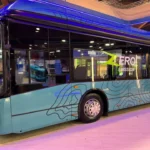Battery Longevity: India’s EV industry is on an unrelenting roll, driven by policy, innovation, and shifting consumer sentiments. But underpinning every EV buying decision is the question that dominates all. How durable will the battery be? As a person strongly interested in automotive trends and committed to delivering authentic, data-driven insights. I think it’s time to put the battery life debate on solid footing. With facts, expert opinions, and a hard-headed examination of the Indian experience.
Battery Longevity Beyond the Myth: Batteries Are Built to Last
For decades, battery life is the weak link in the EV narrative. Early adopters were concerned with expensive replacement and quick capacity degradation. Particularly in India’s harsh environment. But newer data and fleet learnings are telling a different, very much rosier tale.
- Field Data: An overview of EVs worldwide is complete with data indicates. Contemporary lithium-ion batteries usually retain 80% capacity after even 8–10 years of operation. The study by Stanford University, indicates that real-world battery loss is less rapid. Than in laboratory tests due to variable driving habits and better battery management systems.
- Indian Context: Delhi’s growing fleet of electric taxis and buses provides a living laboratory. Operators report that batteries in vehicles holding up well with the Delhi weather. Such as batteries in vehicles like the Tata Nexon EV and BYD e6. With annual degradation rates often below 2%. This means most batteries will easily outlast the typical ownership period of a personal vehicle.
How are Batteries Lasting Longer?
Several factors are driving this improvement:
- Battery Management System (BMS): Current EVs boast advanced management that tracks temperature, charge cycles, and voltage. Eliminating the conditions that speed up aging.
- Improved Chemistry: The transition to sturdy chemistries such as LFP (lithium iron phosphate). These are now prevalent in Indian EVs, provides improved thermal stability and extended cycle life. Specially in hot weather areas such as Delhi.
- Wiser Charging Behavior: As workplace and home charging become more popular. The majority of Indian EV owners employ slow or moderate charging. Which is more battery-friendly than regular fast charging.
What Does Battery Longevity Mean for Indian Consumers?
- Lower Total Cost of Ownership: With batteries lasting 8–15 years.. The economics of EVs are more compelling than ever. Fears of early, expensive replacements are largely unfounded.
- Environmental Benefits: Extended battery life translates to fewer replacement needs. Less waste, and an even stronger argument for EVs as a sustainable transportation solution.
- Resale Confidence: The used EV market is already increasing, providing even greater access to clean transportation.
Battery Longevity: Challenges and the Road Ahead
Some areas are experiencing severe heat, uneven rural charging networks. The necessity for strong battery recycling as ongoing issues. Yet, the speed of the industry’s innovation facilitated by local startups and international titans alike. Happens to indicate that these are obstacles capable of being overcome.
ELCTRIK Speaks
Battery durability is no longer a question mark over India’s EV revolution. It’s a fact, supported by numbers, field experience, and expert agreement. The future of mobility is electric, and its batteries are geared for the long run.







